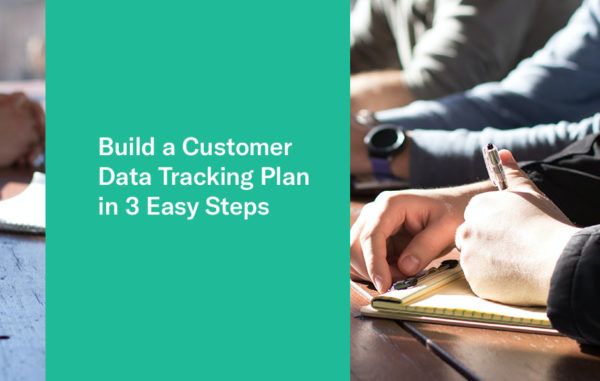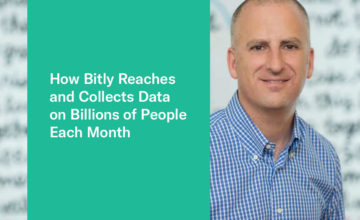The accuracy and usefulness of your organization’s data depends on developing a tracking plan to define and monitor the data you track. Without a solid, well-documented plan, you run the risk of corrupted and confused data—meaning your analytics tools become useless or, worse, you end up making critical business decisions based on bad data.
That problem was the subject of a recent webinar the Indicative team put together along with our friends at Iteratively. You can watch the webinar below, or read on for details on why a tracking plan is so vital for your customer data, followed by an expert how-to on building one for your business.
What Is Data Tracking?
![]()
Data tracking (also called event tracking for our purposes) is the process of rounding up and storing all of the touchpoints, behavior, and interactions users exhibit within your digital product.
A ‘digital product’ could be a website, web app, or even a mobile app. Event data from within these digital environments is tracked for a number of reasons—but it’s broadly used by leadership and business users alike to inform strategic decisions around product management, marketing, and more.
What Is a Tracking Plan?
A tracking plan provides a codified single source of truth for the data that matters to your business and for your product. And it’s a key pillar of your analytics strategy.
A data tracking plan enables you to create standards around data collection that facilitate the capture of clean, well-structured data from the start. When done correctly, that helps businesses avoid a lot of time and second-guessing of analytics down the line.
A good tracking plan outlines:
- What data you’re tracking
- Where you’re tracking that data
- Why you’re tracking that data
Your tracking plan should define the individual events you track, along with key event and user properties that add context to those events. It’s also important—particularly as your data operation scales—to clarify the use case behind each event you track.
Note: We dig into this in more detail later on in the how-to section.
The Benefits of a Tracking Plan
Simply put, an explicit and well-documented tracking plan is the key to scaling your analytics and ensuring the underlying data is accurate and trustworthy. Because without one, things like data bugs can obliterate trust in your data. That often leads your team to use data less often, meaning tracking can end up deprioritized and abandoned.
In other words: When you put garbage in, you get more garbage out.
![]()
And when it comes to the data your team bases critical business decisions off of, garbage is the last thing you want. Ensuring the foundations of your data tracking are solid is a more than worthwhile upfront investment that enables the whole organization to trust the resulting data they see.
Because, in the end, the best analytics tool in the world isn’t worth much if you and your team don’t trust the data.
Beyond that, there are three additional benefits of developing a concrete tracking plan:
- More consistency
- Better usability
- Less complexity
Benefit #1: Consistency
Consistent data is key. A strong tracking plan ensures there’s consistency in the events and properties you track, which means end-users always know what to expect. That makes it easier for users throughout the organization to navigate your data, query, and manipulate it.
In other words, more consistent data is data that gets used more frequently.
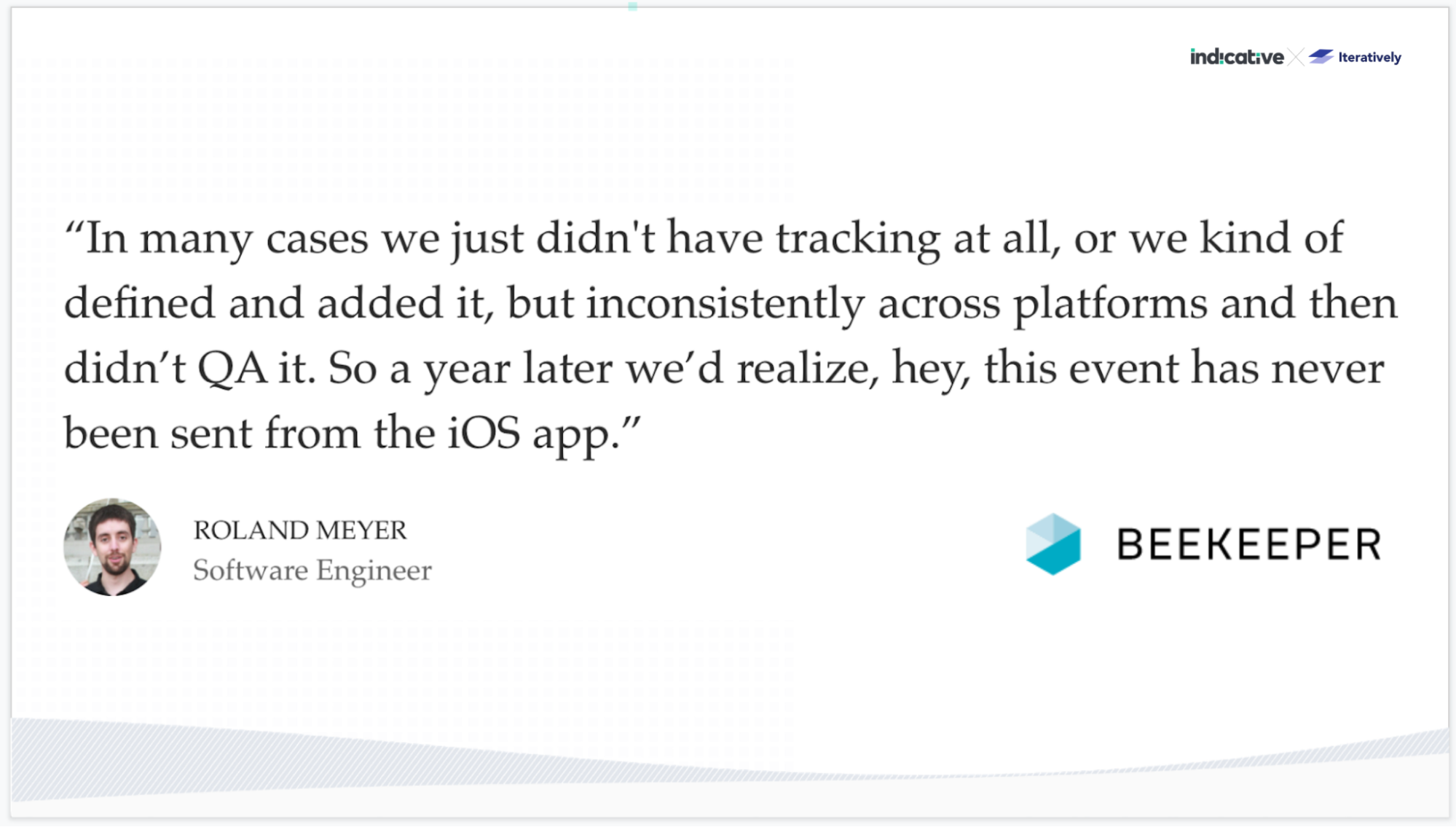
Benefit #2: Usability
Difficult or confusing data drives down adoption. If bringing data into day-to-day work takes too long, people won’t do it. They’ll move on, they’ll find another way to do what they need to do.
One of the easiest mistakes for companies to make when they don’t have a tracking plan is trying to track everything. If you’re tracking too much or tracking data in a disorganized way, it’s just plain hard to operationalize—and people won’t use it.
Benefit #3: Complexity
No tracking plan and no data operation are static. They inherently have to change and evolve as the business realities and needs do the same. When you have a data set that’s well-designed and complete, to begin with, it becomes a lot less complicated to scale and evolve.
Putting the time in upfront makes it easier and simpler to iterate on your tracking plan to unlock deeper insights and more advanced analysis over time.
What Events and Properties Should I Track?
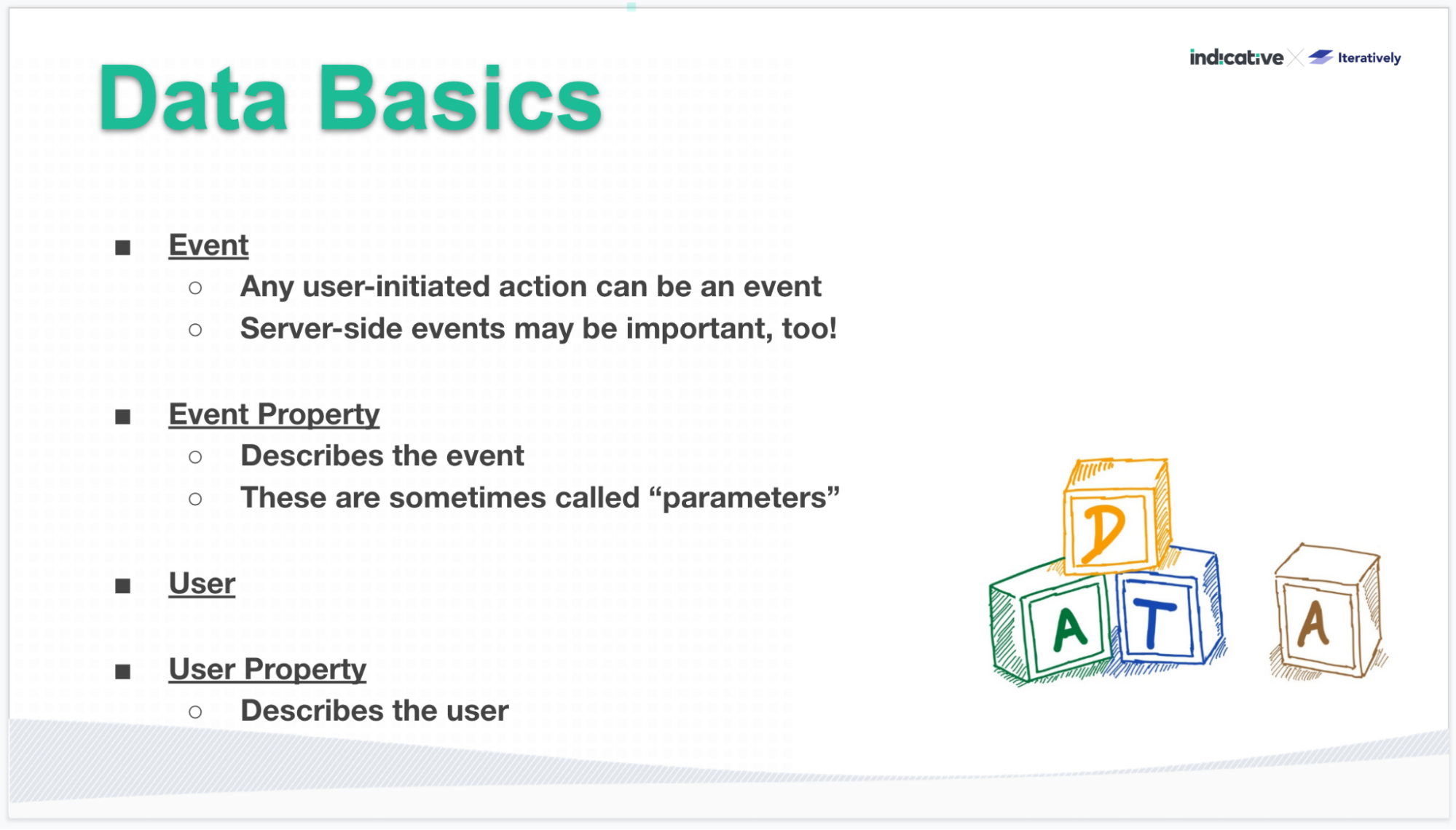
The short answer is: whichever events and properties your use case requires.
There’s no single checklist for which events and properties you should track because it inherently depends on why you’re tracking customer data and how you use it. And as we noted above, tracking everything is certainly not the answer.
We’ll dig into how to identify what you should track later on in the how-to section. For now, let’s take a look at some of the events and properties you can track:
- Events include any action initiated by a user—like ‘View Page’, ‘Click Button’, or ‘Submit Form’.
- Event properties (also sometimes called ’parameters’) describe the event and contextual information, including things like the browser used to view a page and the URL a button links to.
- User properties (sometimes called ‘attributes’) describe the users themselves, including contact information, details on the business relationship (e.g. their subscription plan), and payment information.
Sample Data Tracking Plan
At Indicative, we use a fictitious company, PetBox, as our demo data. Throughout the remainder of this article, the examples will be based on PetBox, the fictional eCommerce company that sells monthly subscription boxes containing animal care products.
Based on a piece of PetBox’s engagement funnel, here’s a sample tracking plan:
![]()
Our basic data model includes the use case event, key properties, source, table, mapping, unique identifier, timestamp, notes, and status. By keeping track of this information, anyone can look at this sheet and identify the information that they need.
The plan includes the following events:
- App Installed
- Intro Landing Screen
- Sign Up Selected
- Details Confirmed
- Account Created
- Open PetCam
- Apply PetCam Filter
And the following event and user properties are tracked, as well:
- Operating system
- Device
- Email address
- First and last name
- Pet age, gender, and diet
- Account username
- Profile creation
- Filter type
How to Build a Data Tracking Plan in 3 Steps
![]()
Building a data tracking plan in order to monitor and analyze your customer journey is at the root of customer analysis. Setting up a tracking plan can seem daunting—but it doesn’t need to be.
Customizing a data tracking plan can be broken down into these three key steps:
- Identify key use cases
- Identify user actions to track
- Build a data tracking model
Let’s dive into each.
Step 1: Identify Key Use Cases
The first step in building an effective data model is to define your business objectives and use cases. Think about your company’s overall goals as well as the metrics and KPIs you would like to analyze, track, and improve. Some examples of these could be:
- Increase new user conversion
- Increase subscriber retention and LTV
- Measure the success of a new app or website feature
- Identify your most effective marketing channels
- Identify points of friction or drop-off in your onboarding flow
- Understand the flow of users through your conversion funnel
Next, identify which questions you need to answer to help reach your objectives. Let’s say your business objective is increasing usage of a new feature by optimizing your engagement funnel. Some examples are:
- Do new users who use X feature within their first session have higher engagement rates?
- Do paid plan customers use certain features more than those on a free plan?
- What screens do new users view first on the app?
Once these are defined, you can begin to identify which data points are necessary to find the answers you need. You can track hundreds or even thousands of different user actions, but most questions require less than a dozen to find the answer. Let’s take a look at which user actions you should be tracking.
Step 2: Identify User Actions to Track
You’ll want to begin thinking about the different steps in your customer journey and how a customer may go through them. Using our PetBox example, let’s say we want to increase new feature engagement through our engagement funnel.
We determined the first user flow we are going to track is new user adoption of the PetCam filter, which we identified as a critical engagement metric. Continuing with our example, we have rolled out a new feature and want to analyze how users are moving between app installation and applying the PetCam filter.
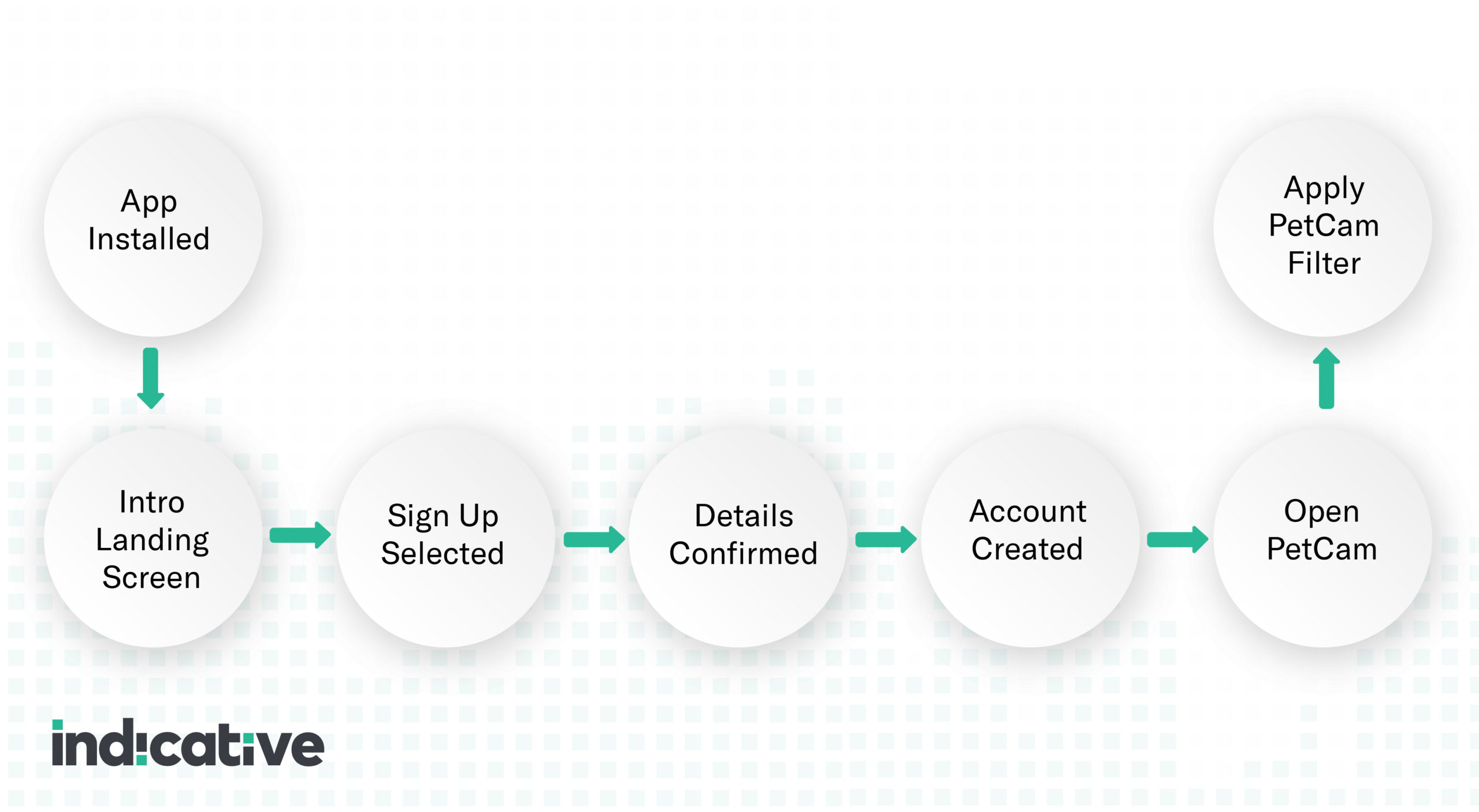
Mapping out this process is important because you are able to visualize what your customer must do to move from app installation to applying the PetCam filter. Once this data is being tracked, you can also identify any points of friction. For example, if all new users open PetCam, but never use the PetCam feature, there may be something wrong with the filter.
Now that you’ve mapped out your first key funnel, you can create a clear definition of each step. Our example journey would look like this:
- App Installed: A user installed the app on their device.
- Intro Landing Screen: A user opened the app for the first time and landed on the intro screen.
- Sign Up Selected: The user selected a signup method, using social media or email authentication.
- Personal Details Confirmed: The user reviewed their name and phone number, then clicked “confirm.”
- Account Created: The user clicked “Create Account.”
- Open PetCam: The user opened the PetCam feature.
- Apply PetCam Filter: A user applied the PetCam filter.
You can now begin to think about the context of each of these events and how they can give insight into user behavior. For example, is a user who completed “Sign Up Selected” using Facebook more likely to complete the flow than a user who signed up directly on the app? These contextualizing bits of data will become the event properties tied to each event, and they enable you to segment your users and compare behavior between groups.
Some event properties, such as date, time, device type, and more, can be applied to all of the events, and others, such as using the PetCam filter, will be specific to a single event. For example, let’s view a few event properties tied to the event “Apply PetCam Filter”:
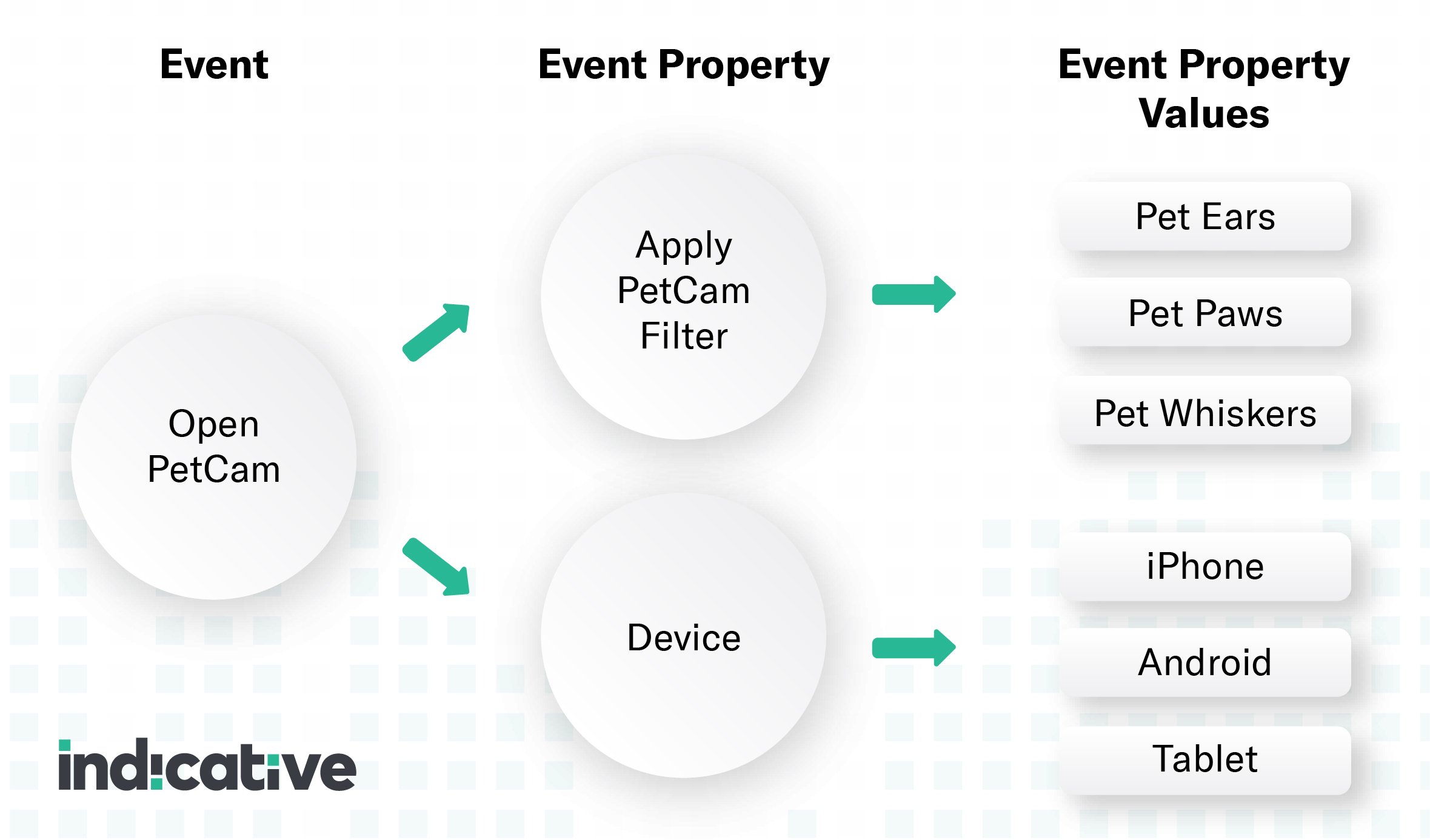
To ensure a clean data taxonomy, it’s just as important to create definitions for event properties as it is to create them for events. Our example’s data taxonomy would look like this:
- Apply PetCam Filter Type: The type of filter chosen by the user
- Device: The device utilized by the user
A well-structured data taxonomy allows for easier analysis of the media dimensions that matter the most to your business and keeps your data consistently organized.
Step 3: Build Your Data Tracking Model
A data tracking plan lays out which events to track, where those events go in the code base, and why those events are important to your business. Having a tracking plan benefits all members of your team because it builds consistency.
According to Segment, a good tracking plan should:
- Summarize which events and properties need to be added
- Justify why they need to be tracked
- Detail where in the codebase they need to be added
- Inform stakeholders of progress/completion
Data tracking plans work best when they are created with easy access in mind (remember, all employees involved should be able to access this file and make changes or additions when needed), so we created our data model in a Google Sheet.
By taking these three steps to build a tracking plan, you’ll be on your way to analyzing your customer data. To operationalize that data and turn it into useful, accessible insights, sign up to try Indicative 100% free.
